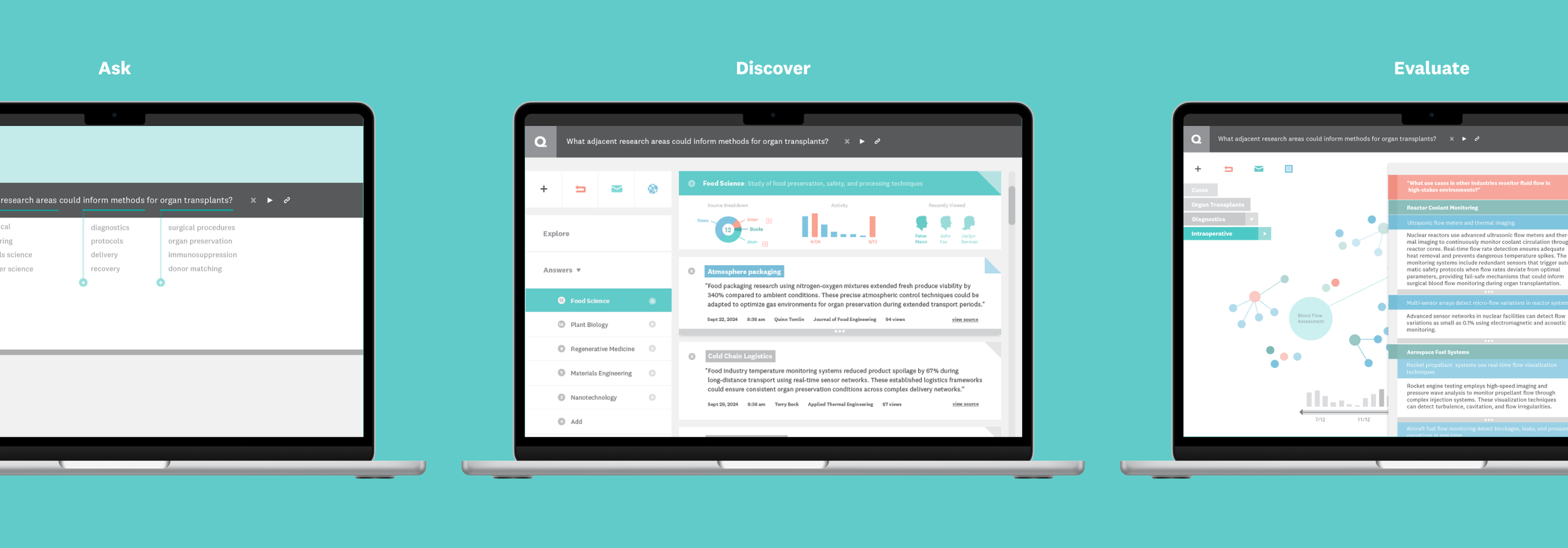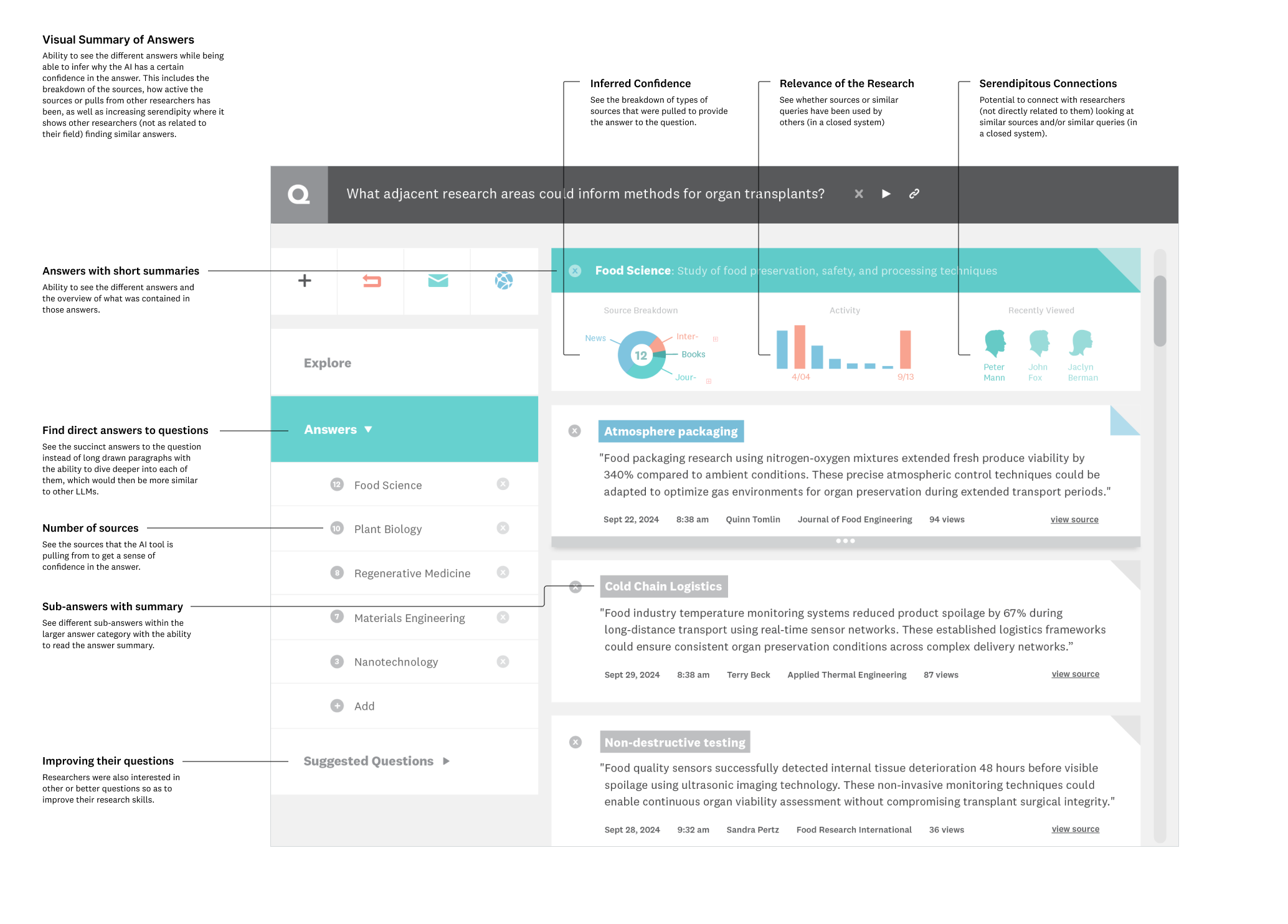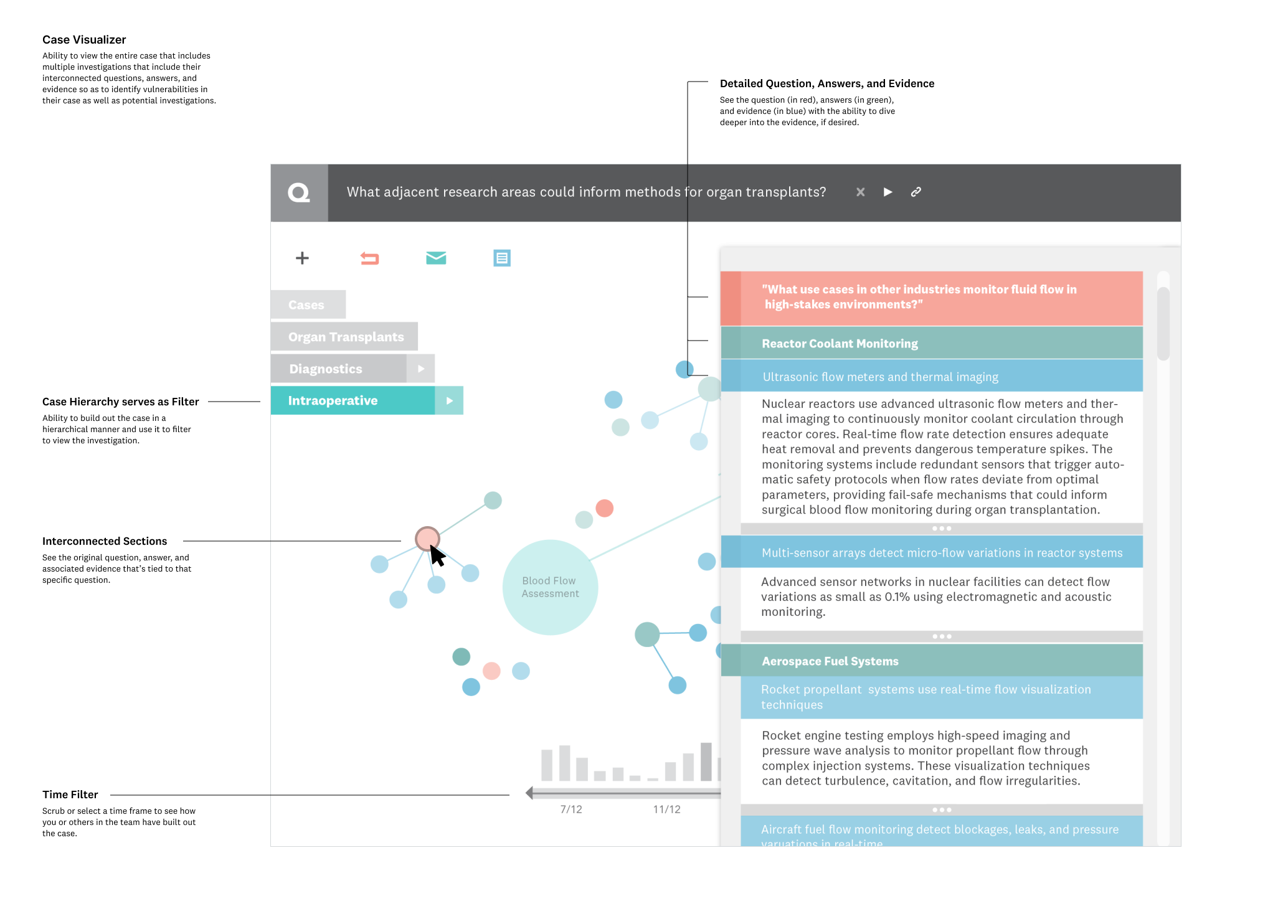IBM Watson
Enabling Discoveries with Artificial Intelligence
Type: Vision | Role: Lead Designer | Design: AI Design
To comply with the non-disclosure agreement, I have omitted and obfuscated confidential information. All info in this case study is my own and does not necessarily reflect the views of IBM.

THE ASK
How do we enable R&D teams to find breakthrough discoveries that may be buried in overwhelming amounts of information?
Watson Discovery Advisor is designed for expert researchers overwhelmed by vast amounts of data and literature, helping them synthesize information to
ask stronger open-ended questions while seeing how the AI interprets and breaks down their queries
discover a breadth of potential answers with associated confidence levels
evaluate the strength of their hypotheses and identify promising areas for investigation.
MY ROLE
Strategist and designer with the challenge of creating a vision of a distinctive AI experience that was not another LLM chatbot
Provided UX vision and leadership
Conducted and synthesized insights from user interviews
Directly contributed solutions and assisted other designers
Collaborated with PM and Eng for viability and feasibility
Step 1: Ask
How do we enable users to ask better questions by knowing how the AI is interpreting it?
3 Main Phases of Research
Step 2: Discover
How do we help users uncover novel perspectives that lead to breakthrough discoveries?
Step 3: Evaluate
How do we help users evaluate their hypotheses strength and identify promising directions?
How do we enable users to ask better questions by knowing and adjusting how the AI is interpreting their open-ended questions?
INSIGHT
STEP 1: ASK
While researchers loved the ability to use LLMs in their research, they often felt they were wasting time and forced to play a guessing game to get a good enough prompt to work for their needs.
Starting from First Principles
To prevent ourselves from following too much what was available out in the market, we started from sketches instead of going straight to wireframes.
Exposing the AI’s interpretation
Concept showing how the AI is interpreting phrases or specific words based on the prompt so that the user could see whether the AI is interpreting it correctly.
‘Ask’ Mockups
Breaking down the prompt
Displays the AI's interpretation of key terms in the prompt through a list of phrases or words.
Simple editing of the AI’s interpretation
The researcher can easily tweak or add to the AI’s interpretation of the prompt before running it.
How do we help users uncover novel perspectives that lead to breakthrough discoveries?
STEP 2: DISCOVER
INSIGHT
The expert researchers consistently emphasized the critical role of serendipity in their breakthrough discoveries—specifically, the value of connecting their specialization to adjacent fields through actual research or experts in those fields.
Rather than seeking perfect matches, they actively wanted to see 'near-miss' results, viewing these imperfect answers as fertile ground for unexpected connections and novel research directions.
Succinct answers, not long sentences
Instead of the lengthy paragraphs in LLMs, short answers answer the question directly while users have the options to dive deeper into those specific answers .
‘Discover’ Mockups

Displays the sources in context of answers
Users can see how the AI is inferring the answers from the different sources it referenced with the ability to bookmark to increase their importance.
View answers and their associated evidence
Users can gauge the confidence of those answers based on the type of source, level of activity in the research area and (in a closed system), other researchers who are asking similar questions.
How do we help users evaluate the strength of their hypotheses and identify both vulnerabilities and high-potential research directions?
INSIGHT
STEP 3: EVALUATE
The researchers use a wide arrays of sources and evidence in building their case but they often shared that they couldn’t see how their case was going.
Furthermore, with LLMs, it was important to showcase the contextual history of the questions, answers, and evidence because of their ever-changing responses.
Exploring Relationships
Explored different types of relationships for different types of information and/or people that are conducting the research.
‘Evaluate’ Mockups

Relationship between Answers, Questions, & Evidence
The case is visualized with strong correlations between answers, questions, and evidence so as to showcase their connections.
Using Hypotheses as Filters
Users can see the strength of their overall case and filter based on the strength of each hypothesis to identify vulnerabilities or promising areas.
Outcomes & Reflections
We presented our work to IBM’s CEO and IBM Watson’s Leadership. It was received well and the vision served as a reference for the building of the product.
The team also received numerous patents and publications in the field of AI.
I was grateful for leading the team to come up with an AI solution that was not another chatbot and showed that there are other explorations possible in human-AI interaction.
Rather than defaulting to conversational interfaces , we demonstrated how AI could serve as a research amplifier—surfacing evidence strength, revealing reasoning pathways, and enabling collaborative discovery through transparent sharing.













